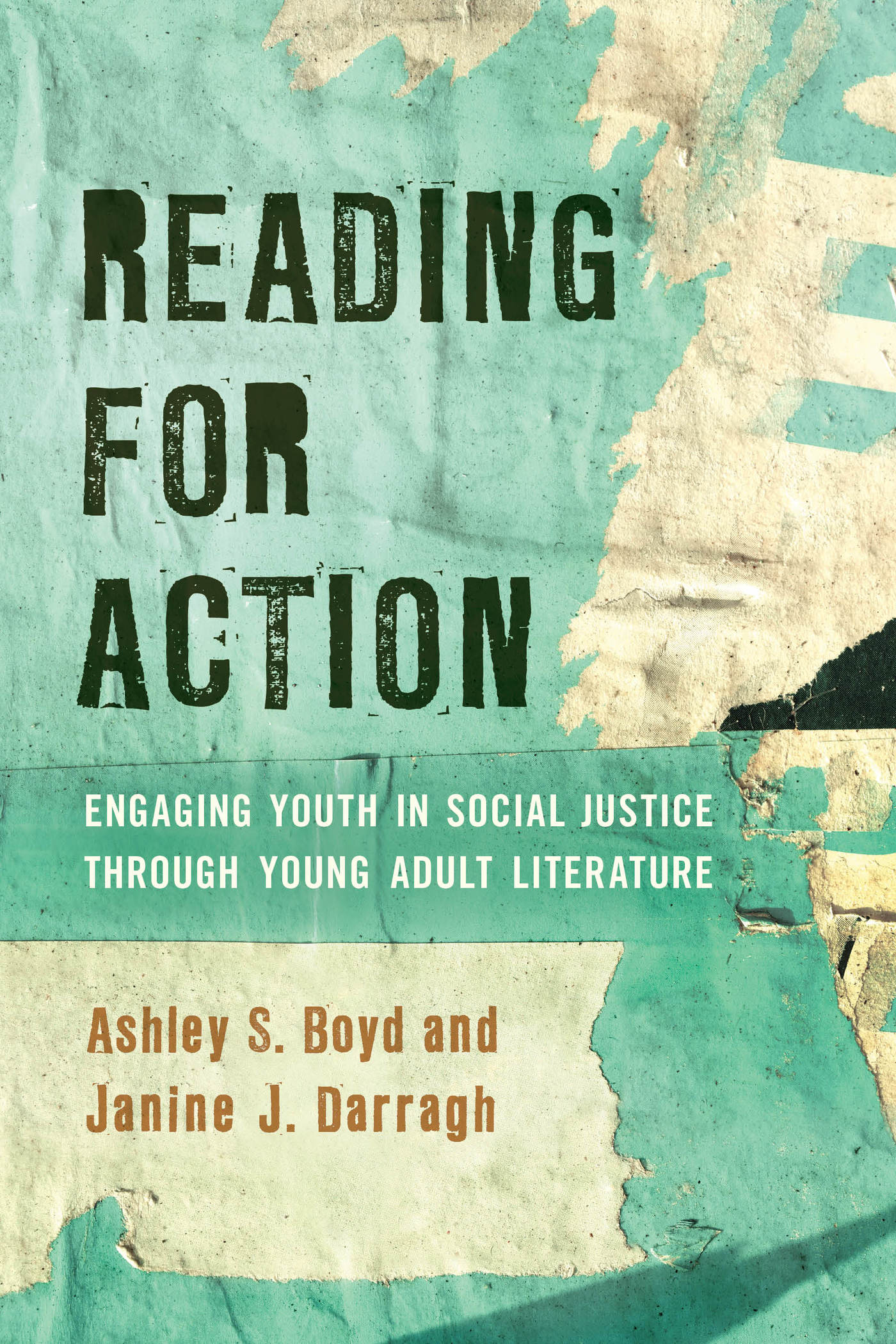Reading for Action
Reading for Action
Engaging Youth in Social Justice through Young Adult Literature
Ashley S. Boyd and Janine J. Darragh
ROWMAN & LITTLEFIELD
Lanham Boulder New York London
Published by Rowman & Littlefield
An imprint of The Rowman & Littlefield Publishing Group, Inc.
4501 Forbes Boulevard, Suite 200, Lanham, Maryland 20706
www.rowman.com
6 Tinworth Street, London SE11 5AL
Copyright 2019 by Ashley S. Boyd and Janine J. Darragh
All rights reserved. No part of this book may be reproduced in any form or by any electronic or mechanical means, including information storage and retrieval systems, without written permission from the publisher, except by a reviewer who may quote passages in a review.
British Library Cataloguing in Publication Information Available
Library of Congress Cataloging-in-Publication Data Available
ISBN: 978-1-4758-4666-9 (cloth : alk. paper)
ISBN: 978-1-4758-4667-6 (pbk. : alk. paper)
ISBN: 978-1-4758-4668-3 (electronic)
 TM The paper used in this publication meets the minimum requirements of American National Standard for Information SciencesPermanence of Paper for Printed Library Materials, ANSI/NISO Z39.48-1992.
TM The paper used in this publication meets the minimum requirements of American National Standard for Information SciencesPermanence of Paper for Printed Library Materials, ANSI/NISO Z39.48-1992.
Printed in the United States of America
Foreword
Young adult literature has been a trojan horse, a large body of transformative stories secreted into the curriculum to open windows and doors, small and large; the friend we always wanted even if/when we did not know we wanted her/him/them; the families we have not had and/or enhanced the families we are a part of and the families we can be a part of, even if not in the same household or community, near or far; an elixir; a gateway drug to the classics; a transport to other worlds; a safe haven. Young adult literature has been a shield, a cudgel, a mirror; a prolific world maker, generating rich and round characters who tell stories upon stories of the many, for the many, rather than the few, stories that create and recreate new bodies and ways of being.
We have tapped young adult literature to hoist on its many shoulders myriad causes: to improve reading comprehension; to increase motivation to read literature, fiction and non-fiction; to help students understand and confront bullying; to learn about and empathize with those living with mental health issues, their own and/or their loved ones; to unpack the complexities of people in poverty, pushing back against pervasive stereotypes; to challenge the gender binary and heteronormativity and construct more inclusive gender and sexual identities; to depict the costs of systems of oppression upon people of color, providing opportunities for students and teachers to engage in an array of social justice literacies with which, together, they can begin to work toward change at any level possible; and, simply, to provide fascinating reads for adolescents (and for those of us who are a wee bit older). Surely no one can say young adult literature has been hesitant to explore the confounding issues of our time.
Reading for Action: Engaging Youth in Social Justice through Young Adult Literature, however, suggests that young adult literature can do even more. Freire and Macedo (1987) argued that if the texts generally offered students once hid much more than they revealed of reality, now literacy as an act of knowledge, as a creative act and as a political act, is an effort to read the world and the word. Now it is no longer possible to have the text without context (p. 43). Book by timely book, contextualizing and interrogating the issues in our world within which inequities are produced, walls built and bolstered, systemic obstacles thrown up to deny individuals the individuality we as a country purportedly believe is one of our core values, Reading for Action shouts out that what we do in our classes need not and should not stay in the classroom.
Friere and Macedo (1987) also maintained that the educational space reproduces the dominant ideology. However, it is possible within educational institutions to contradict imposed dominant values (p. 126). Though I do not think Boyd and Darragh ever use the word revolution, they have indeed mapped a fully-strategized curricular revolution for the English Language Arts classroom. Beginning with a selection of compelling young adult literature texts about current social topics, modeling the kind of critical dialogue that should be the lifeblood of our classrooms, each chapter then posits the kinds of actions that can begin to tear down barriers, act by determined act. Reading for Action is a project brimming with resistance/s to and disruptions of the status quo.
The preservice and early-career teachers I have the honor to work with frequently comment that they are overwhelmed with all they need to accomplish with students in their classrooms in the midst of events occurring in the world today, careful and caring pedagogy and curriculum awash in the wake of mass shootings in schools and other public spaces; extreme weather bringing more and more uncertainty to the future world of their prospective students; a rapidly changing economy raising questions about how their students can make a path in their life; and political systems locally and nationally that exacerbate rather than mitigate the problems that cause unrelenting suffering for far too many. Greene (1995) recognized that anxiety, writing that There is no question but that some students face fearful obstacles due to the inequities in this country (p. 18). She believed, as a result, that a general inability to conceive a better order of things can give rise to resignation that paralyzes and prevents people from acting to bring about change (pp. 1819). But Greene was not one to acquiesce. She pointed out that, We also have our social imagination: the capacity to invent visions of what should be and what might be in our deficient society, on the streets where we live, in our schools (p. 5).
As we are surrounded by the towering, toppling issues and events that trouble our lives, our instinct may be to run. But Reading for Action shows us that we can stand our ground, take a breath, look each other in the eyes, roll up our sleeves, and together envision ways to chip away at these precarious towers, to move forward, to imagine and create safe spaces within which to effect significant change. Reading for Action will be a guide for teachers who want to make a difference with their students not only in the classroom, students acquiring critical skills, content knowledge, and cultural understanding, but also in their day-to-day lives in their communities beyond school. It is about time for a book like this founded on close reading of contemporary young adult literature, steeped in deep understandings of critical pedagogies. I think we are more than ready for it.
Crag Hill, Associate Professor, The University of Oklahoma
References
Freire, P., & Macedo, D. P. (1987). Literacy: Reading the word & the world. London: Routledge & Kegan Paul.
Greene, M. (1995). Releasing the imagination: Essays on education, the arts, and social change. San Francisco: Jossey-Bass Publishers.
Preface
This book came about as the result of numerous conversations between the two of us about young adult literature, teachers, and social justice. We love our work, our students, and young adult texts, and we are both passionate about issues of equity and society. We knew that these areas could and should be combined, yet both of usformer secondary English teachersalso know too well the struggle that teachers often face: the desperate desire to implement a new lesson or unit combined with the sheer lack of time to invest in researching and locating appropriate resources and texts. Teachers attention is often pulled in what feels like a million directions with the pressures of testing and paperwork, responding to students individual needs and parents concerns, and working with colleagues and administrators.
Next page
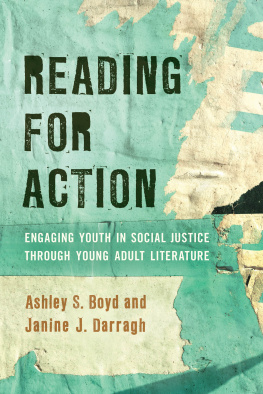
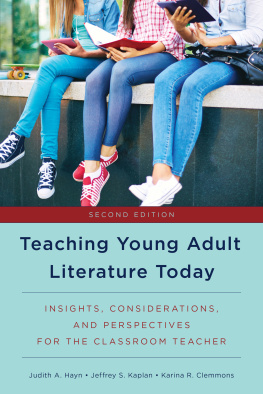
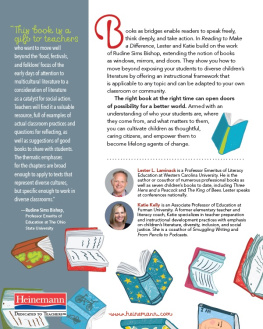
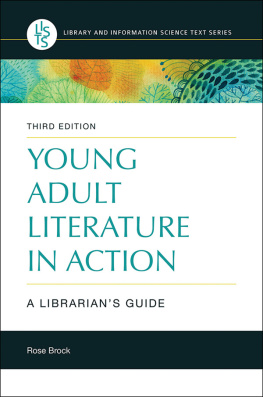
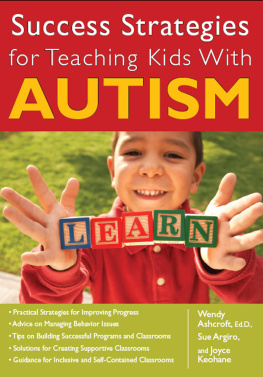

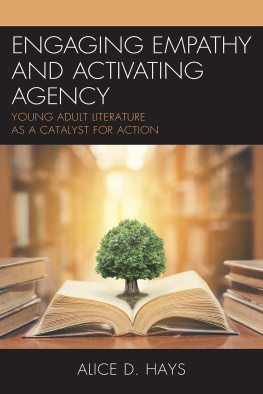
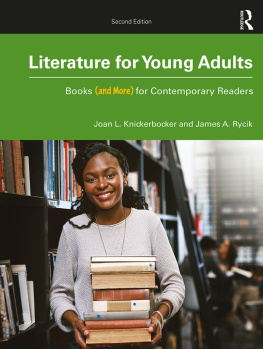

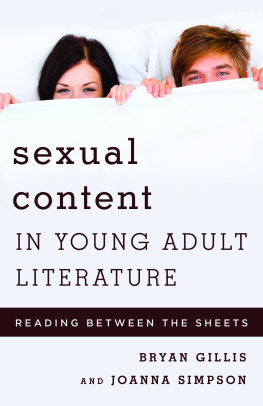
 TM The paper used in this publication meets the minimum requirements of American National Standard for Information SciencesPermanence of Paper for Printed Library Materials, ANSI/NISO Z39.48-1992.
TM The paper used in this publication meets the minimum requirements of American National Standard for Information SciencesPermanence of Paper for Printed Library Materials, ANSI/NISO Z39.48-1992.